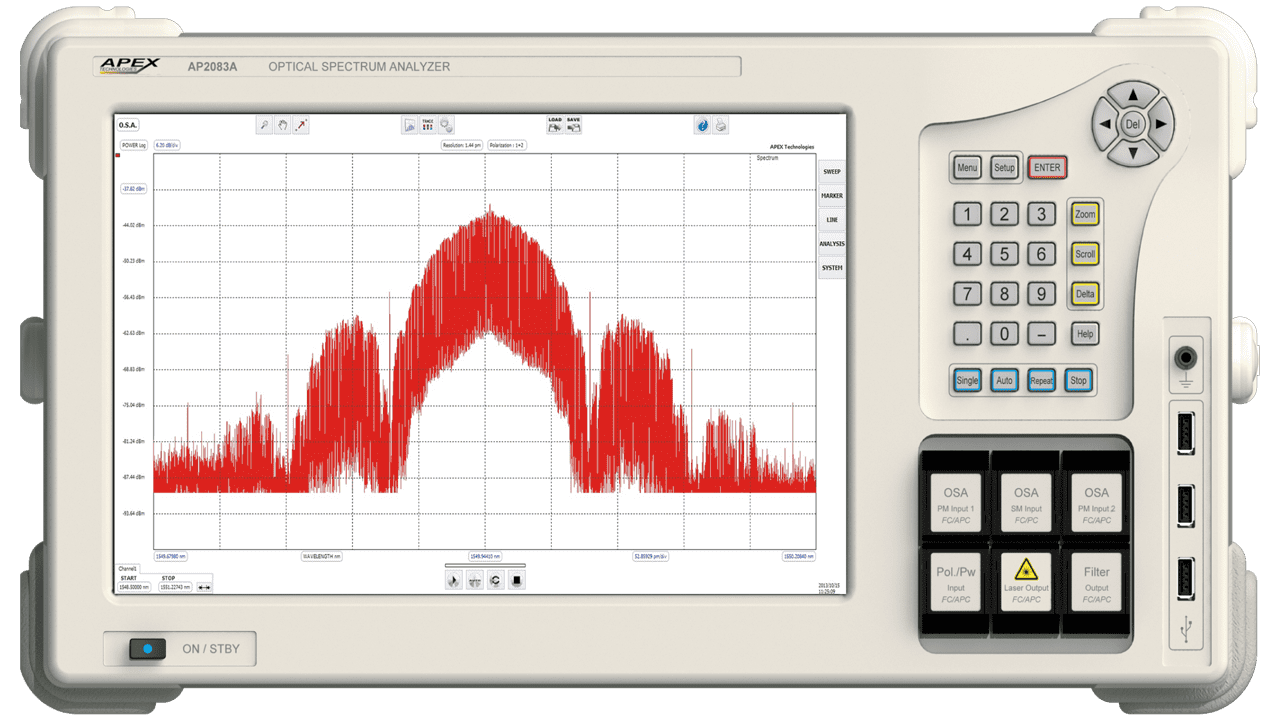Contents

Source: Yokogawa Test & Measurement Corporation – Yokogawa Electric Corporation
Understanding Optical Spectrum Analyzers
Introduction to Optical Spectrum Analyzers
Optical Spectrum Analyzers (OSA) are precision instruments used to measure optical spectra, enabling further analysis in various applications. They are essential tools for photonics professionals in fields like optical communications and spectroscopy.
Types of Spectrum Analyzers
Specialized vs. All-purpose Analyzers
Some spectrum analyzers are tailored for specific applications, such as telecom wavelength bands or high-resolution spectroscopy. Others offer versatility in laboratory settings, providing flexibility in wavelength ranges and resolution settings.
Stand-alone vs. Computer-connected Instruments
OSA can be stand-alone or connected to a computer for control and data analysis. Stand-alone instruments are suitable for field use, while computer-connected ones offer enhanced features and automation.
Optical Input Methods
OSA can receive input light through fiber-optic connections or free-space optical setups. Fiber inputs are convenient for applications already using fiber optics, while free-space setups require precise alignment.
Power Measurements and Spectral Densities
OSA display optical powers rather than power spectral densities, which can be calculated based on detection bandwidth. For accurate power measurements, dedicated power meters are recommended due to coupling efficiency variations.
Operation Principles
Grating-based Analyzers
Some analyzers use diffraction gratings to disperse light for analysis, offering high acquisition speeds. They are suitable for various applications but may have limitations in wavelength ranges and dynamic range.
Interferometer-based Analyzers
Fabry-Pérot interferometers and Michelson interferometers offer high-resolution spectrum analysis. Fabry-Pérot interferometers provide fine wavelength resolution in narrow ranges, while Michelson interferometers use Fourier transform spectroscopy for broad wavelength coverage.
Performance Figures of OSA
Key Performance Metrics
Important performance figures include wavelength range, resolution, accuracy, dynamic range, sensitivity, power accuracy, and acquisition speed. These metrics determine the capabilities and limitations of optical spectrum analyzers in different applications.
Conclusion
Optical Spectrum Analyzers are indispensable tools for analyzing optical spectra in various fields. Understanding their operation principles and performance parameters is crucial for accurate and reliable measurements in photonics applications.

Source: APEX Technologies
Feel free to comment your thoughts.



